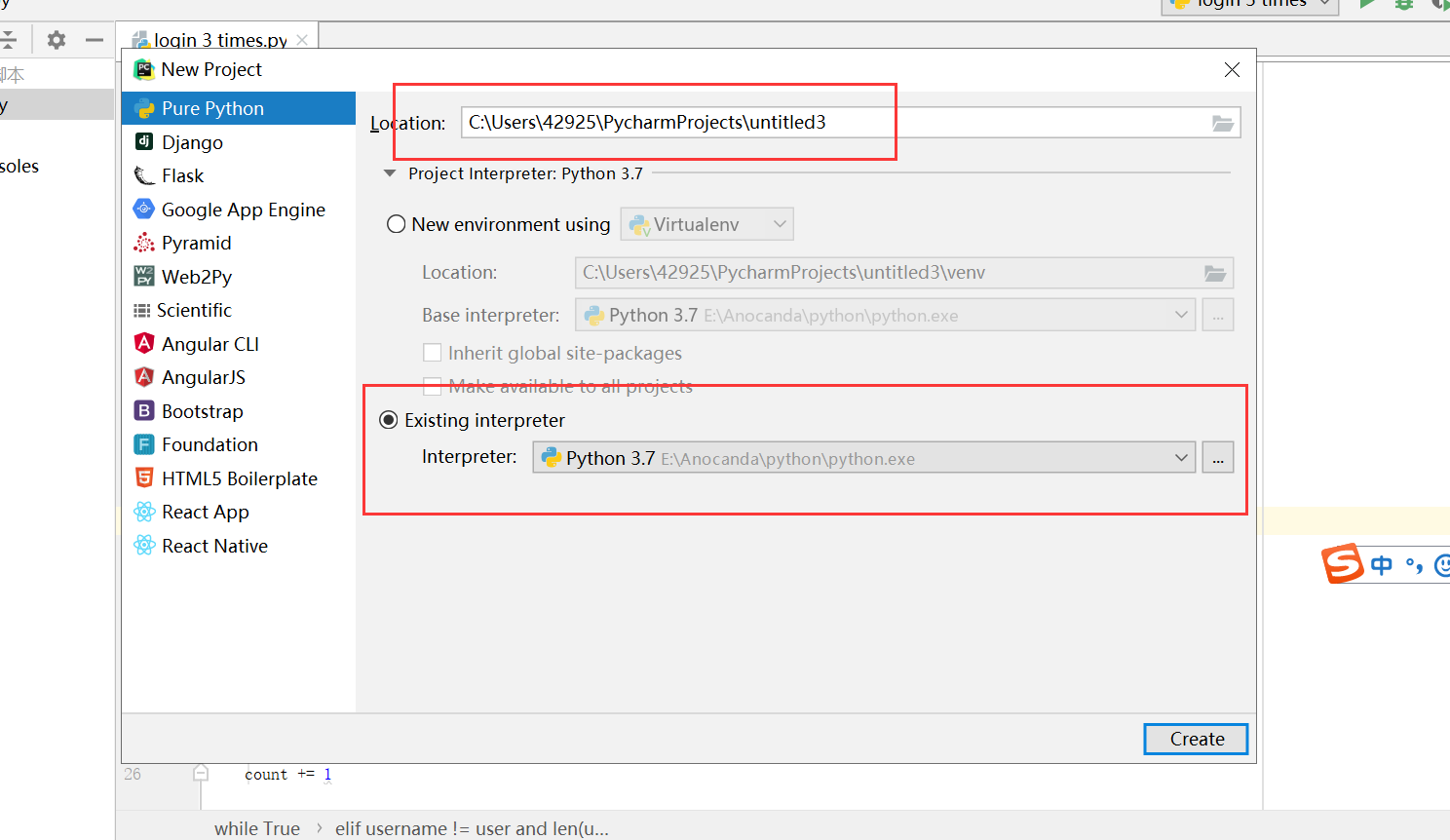Python入门(一)数据类型、循环语句
脚本语言类型:
1.编译型语言:写完代码不能执行,需要先编译 eg:c、c++、c#
2.解释性语言:不需要编译 直接执行 eg:python、java、php、js、go、ruby
编程工具 pycharm
1.破解方法:https://blog.csdn.net/sophia_11/article/details/86520390 ; idea.lanyus.com
2.创建 New project
create new project -》pure python (选择路径)-》new-》python file
注:选择existing interpreter 避免创建虚拟环境

3.修改python版本:


Python 数据类型
1.定义变量: 变量名 = ‘变量值’
2.整数 int:Python可以处理任意大小的整数,当然包括负整数,在Python程序中,整数的表示方法和数学上的写法一模一样,例如:1,100,-8080,0,等等。
3.浮点数 float:浮点数也就是小数,之所以称为浮点数,是因为按照科学记数法表示时,一个浮点数的小数点位置是可变的,比如,1.23x10^9和12.3x10^8是相等的。
4.字符串 string:字符串是以''或""括起来的任意文本,比如'abc',"xyz"等等。
5.布尔值:布尔值和布尔代数的表示完全一致,一个布尔值只有True、False两种值,要么是True,要么是False,在Python中,可以直接用True、False表示布尔值(请注意大小写),也可以通过布尔运算计算出来。
6.空值 None:空值是Python里一个特殊的值,用None表示。
Python print语句
1.print语句:eg:print ('hello,word')
注:python3 强制使用('hello,word')格式,python2可以使用'hello,word'格式
2.特殊语句: print (''' let's go "a b" ''')
Python 注释方法
1.单行注释:#print ('hello,word')
2.批量注释:''' ''' 或者 """ """
Python input用法
1.input 语句: name = input ("请输入用户名).strip() <-去除空格
Python条件判断和循环
1.if条件判断:(相等==,不相等!=,大于等于>=,小于等于<=)
age = 20
if age >= 18:
print 'your age is', age
print 'adult'
print 'END'
2.if .. else
if age >= 18:
print 'adult'
else:
print 'teenager'
3. if .. elif ..else
if age >= 18:
print 'adult'
elif age >= 6:
print 'teenager'
elif age >= 3:
print 'kid'
else:
print 'baby'
4.for 循环
L = ['Adam', 'Lisa', 'Bart']
for name in L:
print name
5.while循环
N = 10
x = 0
while x < N:
print x
x = x + 1
6.break退出
sum = 0
x = 1
while True:
sum = sum + x
x = x + 1
if x > 100:
break
print sum
7.continue继续
L = [75, 98, 59, 81, 66, 43, 69, 85] sum = 0.0 n = 0
for x in L:
if x < 60:
continue
sum = sum + x
n = n + 1


